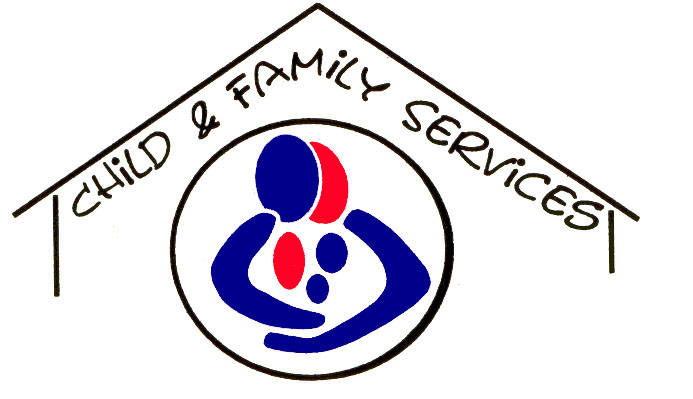In Home Cases Opened by Allegation Findings
Measure
The number of cases opened or re-opened with the In-Home Administration after a child protective services investigation by type of abuse or neglect.
How This Is Measured
Cases that are opened or re-opened with the In-Home Administration during the time period reported, following an investigation by child protective services. The default view shows the new cases opened during each fiscal year quarter by the referral’s allegation type (suspicious child death, sexual abuse, sex trafficking, neglect, abuse, investigation remains open, and total in-home cases opened).
- The referral that led to the open case could have more than one allegation falling into more than one allegation type, and when this occurs it is reflected in each of the categories of allegation types.
- “Investigation remains open” indicates an ongoing CPS referral where the CPS team has determined that an in-home case is the likely outcome, and the case transfer occurred prior to CPS finalizing the investigation so that the family could receive ongoing case management in a timely manner.
- The count of total in-home cases opened is a count of unique families during the quarter.
- If a family has an open case for several months, achieves case closure, and then later (within the time frame reflected on the dashboard) has another investigation that leads to an open case, this family would be reflected in the total in-home cases opened each time a new case is opened.
A radial button at the top left allows the viewer to toggle between viewing by allegation or maltreatment type, which gives detailed information on the allegation. More than one allegation can be present in an investigation. The default view for maltreatment type view shows the total for each allegation by fiscal year, but by hovering over the dashboard and pressing the + sign on the top axis between the labels for “maltreatment type” and “FY” the view can be expanded to show information by quarter (press + once), or by month (press + twice). On the view for allegation type, the default view shows the information by fiscal year quarter. The view can be expanded to show information by month by hovering over the dashboard on the bottom axis (to the left of first quarter displayed, under “Total In-Home Cases Opened”) and press + once.
The filters at the top right allow filtering by fiscal year, month, maltreatment type, findings, and by ward.
- Maltreatment type: This view shows information by the specific allegation. The referral that led to the open case can have more than one allegation, and the various allegations may have different findings. As a result, it will not add up to the unique number of newly opened in-home cases. Some allegations have long names, if it appears cut off hover over the name to see the full name. If a maltreatment type is listed as “Pending,” this indicates a referral that remains open and the case was transferred to In-Home Administration prior to the completion of the investigation in order for ongoing case management services to begin.
- Finding: the result of the investigation.
- Inconclusive: an investigation finding that concludes that there is insufficient evidence to substantiate the report but there still exists some conflicting information that indicate the abuse or neglect may have occurred
- Incomplete: an investigation finding for referrals in which there were barriers to being able to complete every aspect of the investigation. This could include obtaining confirmation during the investigation that the family was a resident of another state outside D.C., the parent refusing the social worker access to the home to complete a home assessment, or inability to locate the family.
- Substantiated: an investigation finding that concludes the allegation of maltreatment or risk of maltreatment is supported or founded by state law or policy
- Unfounded: an investigation finding that concludes there is not sufficient evidence under state law to conclude or suspect that the child was maltreated or is at-risk of being maltreated.
- Child Fatality: Suspicious death of a child that may be due to abuse or neglect. Report of child death is either unexplained, or concern exists that abuse or neglect by caregiver contributed to or caused the child's death (i.e. suffocation of an infant in an unsafe sleeping arrangement; unsupervised child drowning; and/or death of a child due to head trauma or internal injuries that appear suspicious.) CFSA learns of child fatalities through various sources, including but not limited to the CFSA Hotline, CFSA employees, DC Health, the Metropolitan Police Department, and the news media. This data is reflective of the notifications through the CFSA hotline only.
- Pending: this indicates an investigation that remains open, despite the case already being transferred to In-Home Administration for case management services to begin.
- Ward: This allows you to filter by specific ward(s) and shows the family’s ward of residence at the time of the case opening.
Note: The overwhelming majority of new cases opened with the In-Home Administration at CFSA are the result of a CPS investigation and recommendation to open an in-home case. In rare circumstances, the In-Home Administration may receive a case from the on-going foster care units (if there is a sibling in foster care and the sibling’s case is closing) or from the post-permanency unit (when there is a risk of a finalized guardianship disrupting). There are typically fewer than five new cases opened with the In-Home Administration for each of these reasons per fiscal year. They are not reflected in the numbers on this dashboard.
Why This Matters
This information helps CFSA to better understand the needs of the families to inform the types and number of services
Newly Closed Cases for Children and Families Served in their Homes
Measure
The number of cases with the In-Home Administration that were closed and will no longer receive ongoing services from the child welfare agency.
How This Is Measured
All cases that have been closed during the specified time period. Reasons for case closure include (and may not be mutually exclusive):
- Child welfare services not needed: the family has successfully addressed the issues of abuse and/or neglect that brought them to the attention of the agency. The parents are meeting their children’s needs and acting in a protective capacity. Any other supportive services that are needed can be provided from other governmental or community-based agencies. Or, child welfare services are no longer needed due to a person other than the maltreater being awarded legal custody of the child.
- Other (client’s failure to cooperate, client’s request, death): in the event of the only minor child in the home experiencing a fatality, the case would be closed due to no minor child needing protection. Client failure to cooperate may be used when the family refuses to engage with the in-home team, and the legal team at CFSA has determined that there is not enough legal sufficiency to pursue court involvement of the in-home case and therefore the case is closed.
- Moved out of state: If the family moves to another jurisdiction, the case would be closed due to the family no longer being under the jurisdiction of D.C. If this occurs and there are ongoing concerns regarding safety or risk of abuse and neglect, the social worker would call the abuse and neglect Hotline in the receiving jurisdiction to share information about the family.
- Services to be given by others: Services will be provided by another entity
- Court action: This may be when an in-home case with court involvement is transferred out of jurisdiction due to the family moving to another jurisdiction or may be the result of a person other than the maltreater being awarded legal custody of the child.
- Cannot locate: If the social worker has not been able to locate the family for an extensive period of time and therefore cannot provide services to the family, the case will be closed. Extensive efforts would be made to identify the family’s whereabouts, to include checking to see if they are receiving benefits at an updated address, if the children are enrolled in any D.C. schools, and completing a diligent search (which has access to many databases with known contact information for the person and any known relatives).
The length of time the case had been open is also tracked.
Why This Matters
CFSA values building the self-sufficiency of families and staying involved in the lives of families for only as long as necessary to mitigate concerns of abuse and/or neglect. CFSA connects families to services in the community that can continue to provide supportive services after the in-home case has closed.



